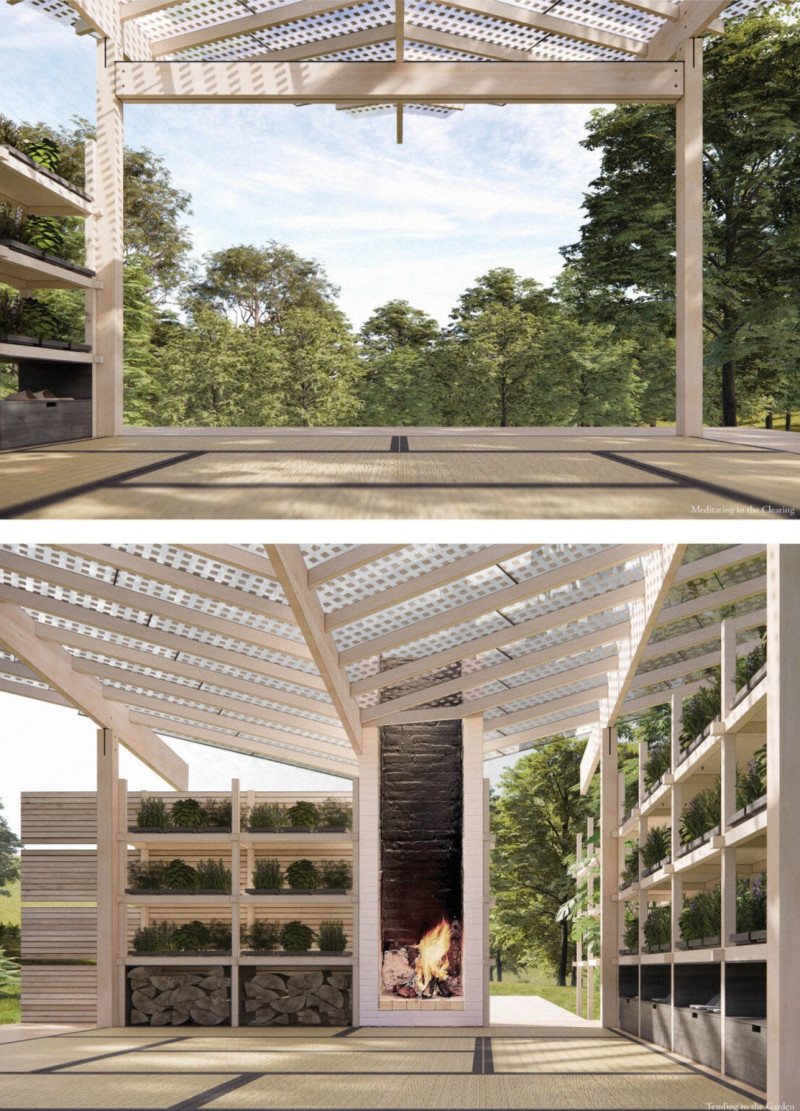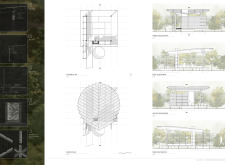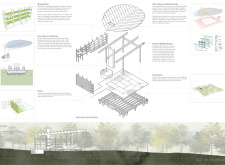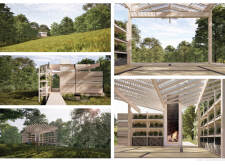5 key facts about this project
Design Elements and Material Choices
The project employs a roof structure that mimics the layered appearance of leaves, reflecting the natural forms found in the surrounding forest. This design approach enhances the cabin's integration with the environment. The primary materials selected for the construction include reclaimed wood for the exterior cladding and structural elements, concrete for the foundation, large glass panels for transparency, and steel for structural support. Each material contributes not only to the aesthetic quality of the cabin but also to its sustainability profile. The use of reclaimed wood minimizes resource consumption, while the glass offers visual connectivity with the outdoors.
Important design features include:
- Planting shelves integrated into the cabin’s structure, allowing for the growth of flora within the living space.
- A rainwater collection system designed to promote water efficiency, highlighting the project's commitment to sustainability.
- Energy-efficient systems, including solar panels and radiant heating options to reduce energy reliance.
Innovative Design Approaches
The unique aspects of Kiwi Cabin lie in its emphasis on blending architectural form with ecological responsibility. Unlike many similar projects that offer merely functional spaces, this cabin seeks to foster a holistic experience by engaging users with their environment. The open layout encourages fluid movement throughout the space, while strategic partitions delineate areas for meditation and communal interaction without compromising the sense of openness.
By prioritizing passive energy strategies and a low carbon footprint, the Kiwi Cabin stands out as an example of sustainable design practice in contemporary architecture. The architectural expression aligns closely with the principles of biophilic design, promoting wellness through a close relationship with nature.
For those interested in a comprehensive exploration of the architectural plans and designs of the Kiwi Cabin, a review of the architectural sections and detailed representations is recommended. This project not only showcases innovative architectural ideas but also serves as a case study in integrating design with environmental stewardship.


























